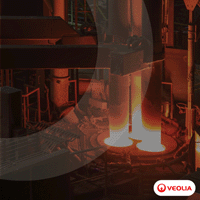U.S. Industrial Sector Reduces GHG Emissions
05/11/2010 - The American Materials Manufacturing Alliance reports that between 1990 and 2008, industrial was the only sector of the U.S. economy in which greenhouse gas emissions fell.
The American Materials Manufacturing Alliance reported that between 1990 and 2008, industrial was the only sector of the U.S. economy in which greenhouse gas (GHG) emissions fell. During the same period, GHG emissions rose in the commercial, electricity, residential, transportation, and agricultural sectors, according to the group.
The U.S. Energy Information Administration recently reported that U.S. industrial GHG emissions fell more than 3% in 2009—an “unprecedented” reduction for the industrial sector for a single year.
Driven largely by energy efficiency improvements, U.S. industrial GHG emissions fell 5.9% between 1990 and 2008, while commercial GHG emissions went up 36.9%, electricity increased 30%, residential increased 27.3%, transportation rose 21.6%, and agriculture went up 11.3%.
“We’re proud of the industrial sector’s proven record of enhancing energy efficiency and reducing GHG emissions, and we’re committed to further improvement,” said Cal Dooley, American Chemistry Council President and CEO. “Just last week, we honored twelve member companies for implementing energy-efficiency improvements in 2009 that saved enough energy to power all the homes in a city the size of Dayton, Ohio, for one year.
“Use of chemistry products in renewable energy and energy-efficiency applications such as solar panels, wind turbines, building insulation, and lightweight vehicles helps the rest of society save energy and reduce their GHG emissions, too,” Dooley added.
“We’ve taken the initiative to improve performance in energy efficiency, and we’ve reduced GHG emissions well beyond what would have been required under any international agreement,” said Tom Gibson, President and CEO of the American Iron and Steel Institute. “Since 1990, the steel industry has reduced our greenhouse gas emissions by 33%. Before the onset of the recession, we were making more steel in the U.S. than we had ever before and we were doing it with and less energy and fewer emissions.”
“We’re proud of the improvements that our members have made in reducing their carbon footprints. The products that come from aluminum are contributing to energy savings and our manufacturing facilities are increasingly efficient,” said Aluminum Association President Steve Larkin.
The American Materials Manufacturing Alliance (AMMA) is a group of energy-intensive, trade-exposed industries (EITEs) that includes The Aluminum Association, the American Chemistry Council, the American Forest & Paper Association, the American Iron and Steel Institute, and Portland Cement Association.



.png?lang=en-US&ext=.png)






